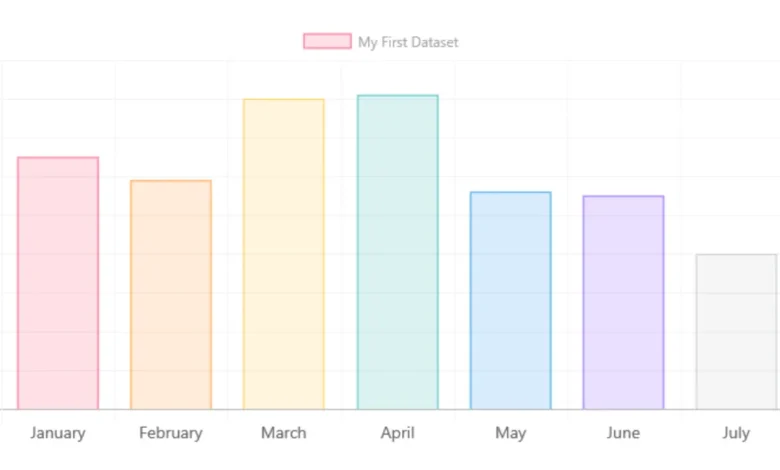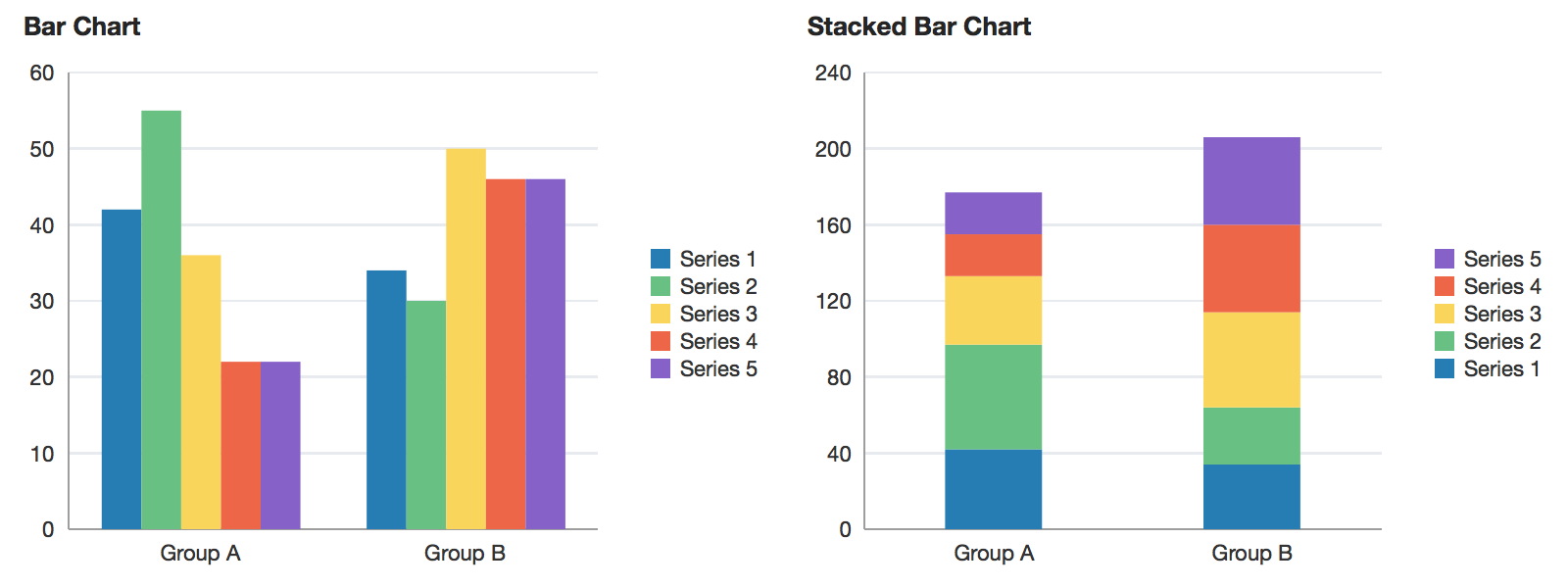Mastering Barcharts: The Ultimate Guide for Data Visualization Enthusiasts

Introduction to Barcharts
Barchart are among the most widely used tools in data visualization. Their simplicity and effectiveness in displaying data make them a go-to choice for both beginners and experts in various fields, from business analytics to academic research. Whether you’re looking to compare quantities across different categories or track changes over time, bar charts offer a clear and concise way to present your data Barchart.
A bar chart, at its core, consists of rectangular bars where the length of each bar is proportional to the value it represents. These bars can be displayed vertically or horizontally, depending on the nature of the data and the preferences of the person creating the chart. The essential components of a bar chart include the axes, labels, bars, and often a legend to provide additional context.
One of the main reasons bar charts are so popular is their versatility. They can be used to compare different groups, track changes over time, or show the distribution of a dataset. This flexibility makes them suitable for various applications, from financial reports to social science research. Additionally, their straightforward design makes them easy to interpret, even for those who may need to become more familiar with data visualization techniques.
History and Evolution of Barcharts

The history of barcharts can be traced back to the early 19th century. One of the pioneers of statistical graphics, William Playfair, is credited with creating the first known bar chart in 1786. Playfair’s work in graphical representation laid the foundation for modern data visualization techniques, including the development of the bar chart.
Initially, bar charts were used primarily in economic and business contexts. Playfair’s early bar charts illustrated economic data, such as Scotland’s exports and imports. These early examples demonstrated the power of visual representation in making complex data more accessible and understandable. Over time, the use of bar charts expanded beyond economics to other fields, including science, education, and public policy Barchart.
As technology advanced, so did the methods for creating bar charts. The advent of computers and software tools in the mid-20th century revolutionized data visualization. Programs like Microsoft Excel and later more specialized tools like Tableau and Power BI made it easier than ever to create and manipulate bar charts. These tools simplified the process and introduced new features, such as interactivity and customization options, that enhanced the utility and appeal of bar charts.
Today, bar charts continue to evolve with the advent of big data and advanced analytics. Modern visualization platforms integrate seamlessly with data sources, allowing for real-time updates and dynamic interactions. This evolution has made bar charts an indispensable tool for data analysts and decision-makers in virtually every industry.
Types of Barcharts
Bar charts come in various forms, each suited to different types of data and analysis needs. Understanding the different types of bar charts can help you choose the right one for your specific application.
Vertical Barcharts
The most common type is vertical bar charts or column charts. In these charts, categories are represented along the horizontal axis, and the height of the bars along the vertical axis defines the values. Vertical bar charts are handy for comparing quantities across different categories. For example, a vertical bar chart can be used to compare sales figures for other products or the population sizes of other countries.
Horizontal Barcharts
Horizontal bar charts are similar to vertical bar charts, but the axes are switched. In a horizontal bar chart, the categories are listed along the vertical axis, and the values are represented by the length of the bars along the horizontal axis. This type of bar chart is proper for long category labels, as it allows more space for text. Horizontal bar charts are also beneficial for comparing data with categories in a natural order, such as age groups or education levels.
Stacked Barcharts
Stacked bar charts allow you to compare the composition of different categories. In a stacked bar chart, each bar is divided into segments that represent different subcategories. The total length of the bar represents the overall value, while the segments show the contribution of each subcategory. This type of chart helps show how different components contribute to a whole, such as the breakdown of expenses in a budget or the distribution of age groups within a population.
Grouped Barcharts
Grouped bar charts, also known as clustered bar charts, compare multiple categories within different groups. In a grouped bar chart, bars are grouped together for each category, with different colors or patterns representing different groups. This type of chart is ideal for comparing data across multiple dimensions, such as test scores for different subjects across different schools or sales figures for different products across different regions.
3D Barcharts
3D bar charts add a third dimension to traditional bar charts, creating a more visually appealing representation. However, due to their added complexity, they can be misleading and difficult to interpret accurately. While 3D bar charts can make your data presentation look more sophisticated, they are generally not recommended for precise data analysis. The distortion caused by the 3D effect can make it challenging to compare values accurately.
Creating Effective Barcharts
Creating an effective bar chart involves more than plotting data on a graph. Several best practices should be considered to ensure your bar chart is clear, accurate, and impactful.
Choose the Right Type of Barchart
The first step in creating an effective bar chart is choosing the right type for your data and analysis needs. As discussed earlier, different types of bar charts are suited to other comparisons. For instance, a grouped bar chart would be more appropriate when comparing multiple categories within groups than a vertical or horizontal bar chart.
Label Axes Clearly
Clear and accurate labeling of axes is crucial for the readability of your bar chart. The horizontal axis (or vertical axis in a horizontal bar chart) should clearly indicate the categories being compared, while the vertical axis (or horizontal axis in a horizontal bar chart) should display the values. Include units of measurement where applicable and ensure that labels are legible and not overly cluttered.
Use Consistent Scales
Consistency in scales is essential for accurate interpretation of bar charts. Ensure that the scale on the value axis is evenly spaced and appropriate for the range of your data. Avoid starting the value axis at a point other than zero, as this can distort the representation of your data and potentially mislead your audience.
Utilize Color and Patterns Wisely
Color and patterns can enhance the visual appeal of your bar chart and help differentiate between categories or groups. However, it’s essential to use them judiciously. Avoid using too many colors or overly complex patterns, as this can make the chart difficult to interpret. Stick to a consistent color scheme and use contrasting colors to highlight fundamental differences.
Provide Context with Titles and Legends
A descriptive title and a clear legend can provide important context for your bar chart. The title should succinctly convey the chart’s purpose, while the legend should explain the meaning of different colors, patterns, or segments. This additional information helps your audience understand what the chart represents and how to interpret it.
Consider Accessibility
Accessibility is an essential consideration in data visualization. Ensure that your bar chart is accessible to individuals with visual impairments by using high-contrast colors and providing text descriptions or alternative text for screen readers. Avoid relying solely on color to convey information, and consider using patterns or textures to differentiate between categories.
Common Mistakes to Avoid
While bar charts are relatively simple, several common mistakes can undermine their effectiveness. Being aware of these pitfalls can help you avoid them and create more accurate and impactful bar charts.
Overcomplicating the Chart
One of the most common mistakes is overcomplicating the bar chart with too many elements. Adding excessive colors, patterns, or data points can make the chart more straightforward, challenging, and accessible to interpret. Keep your bar chart simple and focused on the critical information you want to convey. If you have a lot of data, consider breaking it down into multiple charts or using a different type of visualization.





